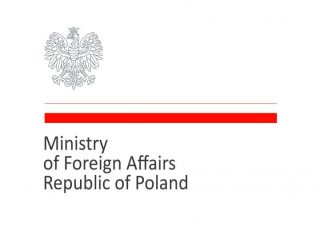New EU VAT rules to regulate e-commerce. A step in the right direction?
W skrócie
For the thriving e-commerce sector, the ongoing COVID-19 pandemic is driving even stronger growth in turnover and profits. This great revolution in consumer behaviour has actually only accelerated the already ongoing trends of moving the sale of goods to the Internet. A few days ago, a little in the shadow of this trend, important legal changes for the e-commerce sector, designed back in 2018, came into force with lesser fanfare. As of the beginning of July, new rules on the VAT taxation of distance sales of goods to consumers came into force throughout the European Union. Although the legal changes are far less drastic than social ones, they should not be underestimated either.
The VAT problem within the EU
The first important aspect of the changes is the modification of the rules on taxation of intra-EU sales. In a common European VAT system, all cross-border transactions within the single market continue to pose problems for legislators. They arise, on the one hand, from the lack of border controls and, on the other, from the lack of full communitarisation of the tax. In other words, deliveries between EU countries are a hybrid between export/import and normal domestic deliveries. This is the root of VAT fraud in business-to-business transactions (the infamous carousel frauds), but the problem also applies to consumer sales.
The sale of goods to consumers in different EU countries inevitably involves a conflict of VAT rules. On the one hand, it is a consumption tax, so it should be paid where the goods are used by the consumer. Yet, on the other hand, VAT is an indirect tax, which means that it should technically be accounted for by the seller, who does not necessarily have a registered office in the country of consumption.
Therefore, if one wanted to apply both principles simultaneously, at least two practical problems arise. Firstly, the seller must submit VAT returns in countries where it does not actually operate. This translates into high administrative costs for completing different VAT return forms in different languages. There is also a greater risk of errors when tax settlements are made in countries with different regulations and practices. Secondly, this situation is equally disadvantageous for the tax administration, which has limited capacity to control and enforce taxes in relation to foreign entities.
So far, the European Union has dealt with the dilemma of cross-border consumer sales through a certain simplification. Each country could set a quota limit up to which a taxpayer could treat sales of goods to that country as if they were sales of goods locally – that is, in their country of registration. However, once the limit was exceeded (which in Poland, for example, was PLN 160,000), the taxpayer was required to register in the country of destination and to settle the tax there. Exceeding the limit, therefore, meant a sudden and dramatic increase in administrative, and sometimes financial, obligations for the taxpayer.
VAT settled at the place of consumption
The new system proposes a completely different approach to solving this problem. First of all, the limit has been standardised and significantly reduced to EUR 10,000. However, in order to reduce administrative costs for entrepreneurs, a so-called „one-stop shop” has been introduced. This means that a taxpayer can submit the tax return of any European Union Member State to his local tax office and pay the VAT declared there.
At first glance, this solution seems brilliant in its simplicity. The taxpayers declare the tax in their state, and that state passes the necessary information and the collected tax on. Once this is in place, many of the differences between Member States will no longer be relevant. The fact that the taxpayers will submit the return in their native language is also of high significance.
The change in the rules may also be particularly attractive to small Polish retailers who would like to expand their business. It is worth bearing in mind that the basic VAT rate in Poland is one of the highest in the European Union. Thus, the application of a high cross-border distance selling limit meant that when someone bought goods from a shop in Luxembourg, the Luxembourg VAT rate applied (normally 17%), whereas the Polish supplier was subject to the Polish rate (normally 23%). The higher the VAT rate the lower the seller’s margin or the higher the price of the goods. Thus, decoupling VAT from the place where the seller is registered and making it dependent on the place of consumption may somewhat level the playing field between sellers from different countries.
Reducing the impact of exceeding the threshold, even if the threshold is lower, can also provide an additional stimulus to development. The old thresholds were an administrative barrier that could be an effective disincentive for small entrepreneurs to expand their business in different countries if the administrative costs exceeded the expected benefits.
The regulations remain complex
Despite the fact that the solution introduced has many merits, one cannot overlook certain problems that may be associated with the new regulations. The most important of these is still the complexity of the regulations. Although one-stop shop represents gigantic progress compared with the obligation to submit declarations in person in every EU Member State, it still does not resolve all the problems arising from the differences between Member States.
The challenge for businesses to determine the correct VAT rate for the product they are selling will remain. It is worth remembering that serious doubts may surround the application of reduced rates. In the European Union, there is as yet no universal classification of goods and services which are subject to reduced VAT rates.
In other words, while there is a list of goods and services that can be covered by preference, countries have quite a lot of freedom in how they pick from the list. Therefore, there are substantial differences between Member States in this respect. It is therefore not possible to obtain a single binding indication of the rate of VAT on a given good in every EU country. By comparison, in the EU customs system, it is possible to apply for so-called binding tariff information, which gives protection throughout the Union.
There is also a systemic challenge. We are not really in a position today to determine how effective control and enforcement will be under the new system. Will EU Member States be willing to enforce on their citizens (and thus voters) a tax that does not effectively generate income for the States? Will small Member States, such as Malta or Cyprus, even be able to control entrepreneurs who deliberately relocate there? Despite the fact that a similar solution already existed for so-called electronic services (e.g. streaming), its scale was substantially smaller. Thus, future evaluation of this system will be of crucial importance.
Regulate shipments to the EU
The e-commerce package, however, is not only about changes for taxpayers who are registered in EU Member States. A very important part of it concerns a tighter control of the imported consignments market. The EU has noted the problem of online stores that import goods from Asia and sell them without charging any duty or VAT at all. In this way, for tax reasons, it has been more profitable for consumers to buy from China than from a European producer or distributor.
Thus, the solutions adopted for imported consignments have two main purposes. The first is to stop the erosion of the tax base, which should provide tax revenue for EU countries. The second but equally important objective is to level the tax playing field between EU and non-EU businesses.
There is no denying that the task is not an easy one. Firstly, it is difficult to force non-EU-based businesses to account for their taxes here. Secondly, it is not practicable to check every consignment imported into the EU because of the gigantic number of such shipments.
Therefore, the actions are two-pronged. On the one hand, foreign sellers are encouraged to settle in the EU by simplifying obligations and offering them a „one-stop shop” import procedure. On the other hand, intermediaries, namely electronic platforms facilitating online trade and courier companies, are involved in the process of ensuring compliance with EU VAT law. These entities may be deemed to be VAT payers and required to account for output tax on such transactions.
Combined with the removal of the VAT exemption on imports for low-value consignments, which has been abused, these measures may improve the collection of VAT and customs duties on purchases from outside the EU. Furthermore, in the future, payment intermediaries are to be involved in this control process, providing information to Member States on payments made for purchased goods (particularly if payments are transferred outside the EU).
Obviously, the new rules do not guarantee the disappearance of the problem, but the common approach of the Member States to the problem gives some hope that the situation will improve.
The new rules on the taxation of e-commerce are probably not perfect, but they are undoubtedly a step in the right direction to foster trade between Member States. They could be a great opportunity for Polish entrepreneurs, who should find it easier to develop their activities and start selling their goods to other European Union countries. Limiting unfair competition from outside the EU should be an extra bonus, which could also have a positive impact on the turnover of local entrepreneurs.
Polish version is available here.
 Publication (excluding figures and illustrations) is available under Creative Commons Attribution 4.0 International. Any use of the work is allowed, provided that the licensing information, about rights holders and about the contest "Public Diplomacy 2020 – new dimension" (below) is mentioned.
Publication (excluding figures and illustrations) is available under Creative Commons Attribution 4.0 International. Any use of the work is allowed, provided that the licensing information, about rights holders and about the contest "Public Diplomacy 2020 – new dimension" (below) is mentioned.
The publication co-financed by the Ministry of Foreign Affairs of the Republic of Poland as part of the public project "Public Diplomacy 2020 – new dimension" („Dyplomacja Publiczna 2020 – nowy wymiar”). This publication reflects the views of the author and is not an official stance of the Ministry of Foreign Affairs of the Republic of Poland.


